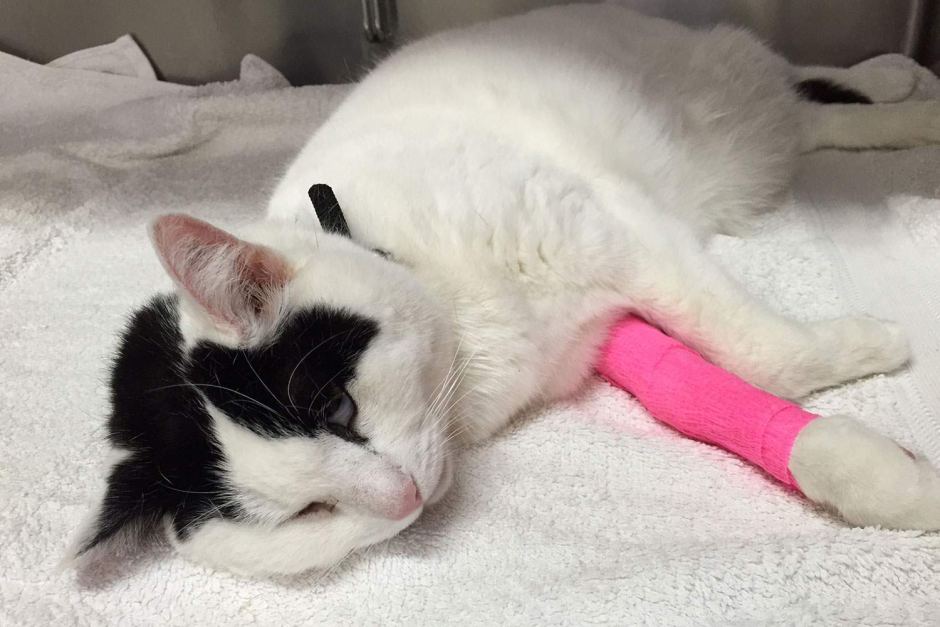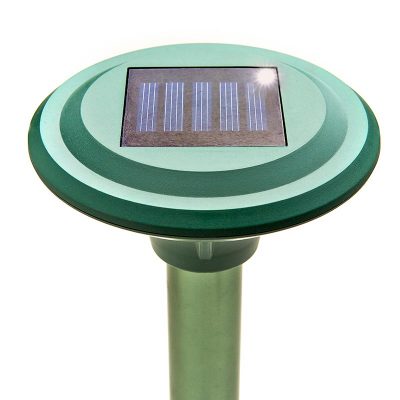Your cart is currently empty!

Snake bites on cats: when nine lives can run on empty
While snake bites on cats are an unfortunately too common occurrence in Australia, the cat’s chances of survival are good, especially when given antivenom. Certain rural and urban areas are harbingers of snake bites. Cats are most frequently bitten by the Eastern brown snake, tiger snake, death adder, copperhead, black snake and the red-bellied black snake.
While cats are bitten slightly more often than dogs 52 per cent compared to 44 per cent, according to a study in the Australian Veterinary Journal – their rates of survival are 91 per cent with antivenom, compared to 75 per cent in dogs. Even without antivenom, some 66 per cent make it through, unlike their canine counterparts whose mortality rate is higher than two-thirds.
The not-so-good news is that cats tend to wander, so the exact time, place, and even type of snakebite in question can be difficult to pin down, even with modern scientific tracking methods such as the University of Melbourne’s SnakeMap Project. “For cats, geospatial data can often not be captured as they roam more and snakebites are therefore less commonly witnessed compared to dogs,” explains project co-creator. Dr Manu Boller. By compiling veterinarian-provided data on when and where pets are bitten, how they were treated and recovery statistics, the goal of the project is to make such information available to the public to help avoid close encounters of the snake kind.
Independent creatures and hunters by nature, cats also consider snakes to be their natural prey. Not only will they seek out and investigate a snake but they will hunt and attack them. The cat usually loses, because even non-venomous snakes lash out when threatened. Even without venom, bites can be very painful and lead to infection as snake’s mouths carry bacteria and parasites from feeding on dead animals. [Simon: The types of venom and bites and various reactions will be in the TK article about the top 15 most venomous snakes]
Snakebites on cats can also be difficult to diagnose. Not all bites are visible, especially in long-haired felines and, as with many other types of health issues, cats tend to mask their symptoms until they are almost life-threatening. “Cats often won’t show signs of being poisoned for up to 24 hours, ” veterinarian Mark Reeve told ABC Radio Adelaide. While most bites occur around the head, neck and legs, when bites to the body to take place, they are more dangerous, enabling the venom to even more quickly to the heart.
Take care of the snake bites on cats right meow!
When it comes to snake bites on cats, a little knowledge can save a lot of heartbreak, damage and expense. Not all symptoms will be present; they may also wax and wane. Even if the cat appears to recover after exhibiting any of the following signs, you should take your cat immediately to the vet.
Two stages, pre-paralytic and paralytic, generally develop. Pre-paralytic usually occurs 10-15 minutes after the bite and may involve the following:
- Fang marks and/or swelling at the location of the bite
- Drooling
- Vomiting
- Diarrhoea
- Urination
- Weakness
- Trembling
- Dilated pupils
- Drooping eyelids
- Sensitivity to light
- Increased respiration

There may or may not be a pain, depending upon the type and amount of venom.
The paralytic syndrome may also occur immediately or several hours after being bitten. Paralysis generally starts in the back legs and moves towards the head and also includes:
- Dilated and fixed pupils that don’t respond to light
- Muscle weakness
- Change in meow
- Lack of coordination/drunken gait
- Rapid pulse and heartbeat
- Difficulty breathing or increased/shallow breaths
- Blue-tinged gums from lack of oxygen
- Blood or tea-coloured urine
- Coma
Once you suspect your cat has been bitten by a snake, even if there are no readily apparent puncture marks or wounds, call the vet to let them know you’re on the way. Along with getting appropriate treatment prepared for your cat, if they don’t have antivenom on hand, they can direct you to another practice that does, saving valuable time.
Because cats can lash out when in a lot of pain, use caution when handling your pet. If possible, enlist another person to help you while on the way to the vet. The following should only be undertaken if it doesn’t take additional time or delay treatment:
- Remove the collar
- Keep the bitten area lower than the heart
- Keep the cat calm and quiet to prevent a rapid heart rate which accelerates the movement of venom
- Apply a firm pressure bandage over the area to slow down the movement of venom. The bandage should not be so tight as to cut off circulation, however.
- If possible, immobilize the affected limb
- If there is no heartbeat or pulse, administer CPR
Do not:
- Allow your cat to walk
- Cut the bitten area
- Attempt to suck the venom out of the bite (this will increase blood flow to the area)
- Apply a tourniquet
- Attempt to catch or kill the snake – along with being potentially dangerous, snakes are a protected species
- Apply ice
- Delay treatment
Expensive, but Worth It
Snake bites on cats can cost a pretty penny, although exactly how much can vary. If antivenom is required, it can run $1300 or so for a generic version not particular to a species. If the cat is hospitalized for any period of time, the total bill could be $2000-3000.
But cats are hardy creatures and the severity of the cat’s reaction to the bite depends upon a number of factors. These include the age and general health of the cat (senior cats and kittens are more vulnerable); amount of subcutaneous fat and thickness of fur; size and species of snake; number and location of bites; whether the cat has been bitten previously (it’s usually worse the second time) and type of venom and microbes from the snake.
Along with confirming that the bite came from a snake and then using a snake venom test to figure out which species might have bitten your cat, the veterinarian will ask questions about where the cat might have been struck and the type of snake, if you happened to see it. Depending upon the situation, other tests may be administered:
- Complete blood count, biochemical profile and urinalysis
- Blood smear to evaluate the red blood cells
- Clotting times, fibrinogen and platelet counts. Certain types of venom affect the cat’s ability to clot.
- Faecal exam to confirm the presence of parasites
- Cultures to check for bacterial infections
Once the appropriate antivenom has been given – and sometime more than one vial may be required, depending on the situation — your cat may receive supportive care such as intravenous fluids, a feeding tube and even oxygen/intubation. Cats that are paralyzed will need to have their bladder manually expressed until able to urinate on their own. Along with antihistamines, steroids, and adrenaline to prevent an allergic reaction to the antivenom (although cats have fewer of those than dogs) the cat may also require antibiotics to prevent secondary infections and analgesics for pain.
Although each feline responds differently to treatment, the sooner you get him to the vet, the better the chances for survival and a quick recovery. Some come home as soon as 24 hours after treatment while others may require a stay of several days. Follow-up medications, such as antibiotics, may be administered at home for 1-4 weeks, and it’s essential to give the cat the full course to ensure recovery. (Anyone who has ever tried to “pill” a cat knows how challenging that can be.) For the first few days at the home monitor the cat for any worsening of her condition and try to keep her as quiet as possible throughout the healing process.
Prevention: The best cure
While the ideal solution would be to keep the cat indoors at all times, your cat might disagree. So if he must go outside, a fenced-in area or a screened-in “catio” (cat patio) extending from a window, doorway or porch will help keep him safe. Still, it’s wise to take precautions in keeping snakes away from your property:
- Keep the grass cut short around your home, clearing brush, flowers and shrubs from walkways
- Keep the yard tidy by removing undergrowth, filling holes in the ground, mowing the lawn, and clearing away toys and tools which make great hiding places for snakes.
- Along with cleaning up spilt food or bird seed, remove clutter from your garage and shed to avoid attracting mice or rats, a snake’s favourite food.
- Piles of wood – another snake/rat hunting ground – should also be stored away from the house
- If you have a fence, dig it a foot into the ground to further repel snakes
The Bird Gard solar snake repeller is another easy, safe and reasonably-priced solution in preventing snake bites on cats. Using solar energy with a backup battery, it produces a variety of sounds threatening to all types of snakes. Unlike other snake repellers which make a single monotonous sound, the Bird Gard model has two random vibration modes, resulting in a five-day cycle of distinctly different noise patterns. This takes and keeps snakes off guard and consistently away. In addition to the garden, Bird Gard repellers can also be placed near clotheslines and play areas and on property boundaries or creek lines.
For total peace of mind, the Bird Gard snake repeller will protect you and your four-legged family member from snake bites, no matter what the species or breed.
Article sources:
- kb.rspca.org.au/my-pet-has-been-bitten-by-a-snake-what-should-i-do_444.html
- cat-world.com/
- onlinelibrary.wiley.com/doi/pdf/10.1111/j.1751-0813.1998.tb10128.x
- pursuit.unimelb.edu.au/articles/mapping-australia-s-snakebites-for-pets
- www.abc.net.au/news/2017-11-04/how-to-know-if-your-cat-or-dog-has-been-bitten-by-a-snake/9102902
- www.catsofaustralia.com/forums/index.php?showtopic=5263
- www.cat-world.com.au/cat-bitten-snake-symptoms-first-aid.html wagwalking.com/cat/condition/snake-bites
- www.tamworthvet.com.au/animalcareandinformation/smallanimalcareandinformation/snakebiteindogsandcats/tabid/26298/default.aspx
-
 Snake Repeller$50.54 Including GST
Snake Repeller$50.54 Including GST
Comments
2 responses to “Snake bites on cats: when nine lives can run on empty”
Hi how can you prove to me that a snake repeller is proven to work .
Hi Katrina
On our website you’ll see a number of snake repeller customer reviews https://www.birdgard.com.au/pest-control/solar-power-snake-repeller/
The Snake Repeller also comes with a 30 day money back guarantee
Regards Bird Gard

Leave a Reply